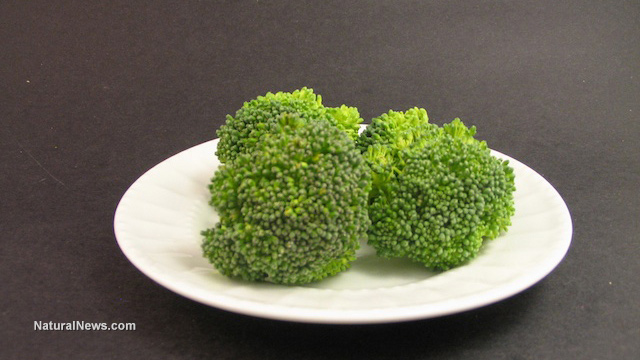
Scientists have known for some time that antioxidants including sulforaphane and quercetin are potent substances for protecting cellular health. Now they have discovered a mechanism by which these substances activate a special protective protein, in a study conducted by researchers from the University of Warwick and published in the journal Antioxidants & Redox Signalling.
The findings may lead to the identification or development of new superfoods to help prevent chronic diseases such as diabetes and heart disease, the researchers said.
The findings center on the activity of a protein known as Nrf2, which is consistently moving into and out of the nuclei of human cells in order to monitor their health and vitality. When a cell's health is threatened, Nrf2 begins to oscillate in and out of the cell more rapidly, which appears to stimulate cellular defense mechanisms and lead to an increase in cellular antioxidant levels.
"The way Nrf2 works is very similar to sensors in electronic devices that rely on continual reassessment of their surroundings to provide an appropriate response," lead researcher Paul Thornalley said.
Antioxidants increase sensor's effectiveness
In the new study, researchers found that, under normal circumstances, Nrf2 oscillates in and out of a given cell nucleus at a rate of one oscillation per 129 minutes. When exposed to the antioxidant chemicals sulforaphane and quercetin, Nrf2's oscillation rate increased to 80 minutes per oscillation.Sulforaphane is an antioxidant found abundantly in broccoli, while quercetin is found in high levels in onions and apples.
The findings suggest that the presence of these antioxidants actually increases the effectiveness of Nrf2, which should in turn make cells more resistant to damage, including oxidative damage.
"The health benefit of Nrf2 oscillating at a fast speed is that surveillance of cell health is increased when most needed, that is, when cells are under threat," Thornalley said. "By understanding how this process works and increasing Nrf2's speed without putting cells under threat, new strategies for design of healthier foods and improved drugs can be devised. Current designs may have selected substances with suboptimal if not poor health benefits in some cases."
The researchers have already used their findings to develop new food supplements, which are currently being tested for their effectiveness at reducing diabetes and heart disease risk.
EU-funded BIOCLAIMS research program coordinator Andreu Palou, who was not involved in the study, said that the findings may help consumers select healthier foods.
http://www.naturalnews.com/046975_sulforaphane_quercetin_cellular_health.html
"A main nutritional challenge in Europe is to substantiate the beneficial effects of foods that are advertised to the consumers," Palou said. "The approach of the group of Prof Thornalley is opening a fascinating new window."
Super-ingredients make superfoods
One of the main drivers of the cellular damage that leads to the effects of aging and to chronic diseases is believed to be oxidative damage by free radical compounds that circulate in the body in response to environmental stress (including exposure to toxins or just normal metabolic processes). By removing these free radicals from the body, antioxidants are believed to reduce the risk of these conditions.Research has backed this up, linking antioxidant consumption to a lowered risk of heart disease and cancer, and to lower levels of inflammation and inflammatory diseases such as arthritis. Antioxidants have also been shown to prevent oxidation of LDL ("bad") cholesterol and reduce arterial inflammation.
Quercetin specifically has been linked to lower blood pressure, reduced heart disease risk and protection from the oxidizing effects of cadmium toxicity. Sulforaphane has been shown to reduce the risk of heart disease and cancer, and may help keep immune function from declining with age.
Sources for this article include:
http://www.alphagalileo.org
http://online.liebertpub.com
http://www.thehealthsite.com
http://www.naturalnews.com
Learn more: http://www.naturalnews.com/046975_sulforaphane_quercetin_cellular_health.html#ixzz3YT6QPnuK

No comments:
Post a Comment